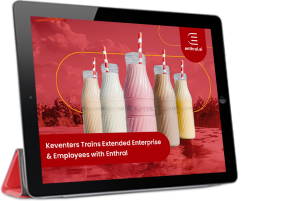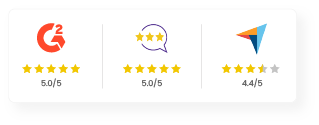How to Implement Extended Enterprise Learning Effectively

No business can operate in silo today. It’s all an interconnected web of employees, partners, customers, suppliers etc who together form the ecosystem that defines an enterprise.
While your employees will always be your ambassadors, you can enable your partners, customers and suppliers to also become your brand advocates and champion your offerings. That’s where extended enterprise learning comes into play.
Think of it as giving your external stakeholders a backstage pass to your business’s success! By effectively implementing a learning program that reaches beyond your organization’s walls, you can create a connected ecosystem where everyone is on the same page and working towards common goals.
So, how do you make this happen? It’s not just about throwing together some training materials and expecting results. It is about creating learning experiences that are engaging and relevant to the needs of all your external audience.
Also Read: 11 Must-Have Features in an LMS for Extended Enterprise Training
We’ll look at a step-by-step guide that will help you set up an extended enterprise learning program that truly hits the mark.
1. Set Out Clear Learning Objectives
The foundation of any successful training program lies in its objectives. In fact, think of learning objectives as your training program’s GPS. Before you hit the road, you need to know where you are going.
Just like that, start by defining what you want your extended enterprise training program to achieve. These objectives should be closely aligned with your broader business goals. For instance, if you aim to enhance customer satisfaction, your learning objectives can include improving product knowledge among customers or increasing partners expertise in using your services. Clear and measurable objectives provide direction and become benchmarks for evaluating the program’s success.
2. Identify Your Target Audience
Who’s tuning in for the training program? Knowing your audience is half the battle won. Extended enterprise learning usually means training a mix of external folks—like partners, customers, suppliers, or contractors.
Each group comes with its own set of needs, knowledge levels, and learning preference. Identifying these groups early on allows you to tailor the training content to meet their specific requirements so that the learning experience is relevant and engaging.
3. Conduct a Training Needs Assessment
Once you have identified your audience, the next step is to assess their current knowledge, skills, and competencies. A training needs assessment is like a reality check for your external stakeholders’ skills and knowledge.
This assessment can be conducted through surveys, interviews, or performance data analysis. The insights will guide you in creating a tailored learning program for each group.
4. Choose the Right Learn Tech Platform
Selecting the right Learning Management System (LMS) plays a huge role in the success of your extended enterprise learning program. Your chosen platform should support both internal and external users. Look for an LMS that is user-friendly, scalable, and offers features like gamification and social learning along with great reporting capabilities.
Plus, the LMS should support multi-tenant functionalities so that you can deliver customized learning experiences to your different groups.
5. Develop Engaging and Relevant Content
Content is king when it comes to learning. To keep your external stakeholders engaged, develop training materials that are not only informative but also engaging. Use a mix of formats such as eLearning courses, video tutorials, webinars, and interactive simulations to cater to different learning preferences.
Make sure the content speaks directly to the challenges and needs of your external audience, whether they are understanding new technologies, mastering your product features, or complying with industry regulations.

Training Extended Enterprise & Employees
- Uniform training across locations
- Centralized content management
- Mobile app for convenient, on-the-go learning
- Simplified auditing and compliance
6. Ensure Accessibility and Flexibility
Most likely, your external stakeholders are based in different places which means they will have varying schedules. So, make sure they can access your training content anytime, anywhere and fit it into their busy lives. This flexibility in how and when learners can access the training materials also helps accommodate their different learning styles. You will also need a mobile-first approach to cater to users who prefer learning on the go.
7. Use Tracking and Reporting Mechanisms
Tracking your learners’ progress is like checking the scoreboard during a game. Use the tracking and reporting features of your LMS to monitor learner progress, engagement levels, and completion rates. This data is gold! It helps you spot where learners might be struggling and gives you the insights needed to tweak and improve the program.
8. Invest in a Blended Learning Approach
Why settle for one learning style when you can mix things up? A blended learning approach combines online and offline methods for a richer experience. For instance, you can offer self-paced online courses supplemented with instructor-led webinars. This way, you cater to different learning styles and ensure that knowledge is applied in real-world situations.
9. Provide Ongoing Support
Training isn’t a one-and-done deal. Make sure your learners have ongoing support to maintain their engagement. This can be done through online forums, helpdesks, or email support. Ongoing support helps learners overcome any challenges they may face during the training while also ensuring they have all the resources they need to learn better.
10. Evaluate and Refine the Program
Rolling out an extended enterprise learning program can transform your organization. With the right approach and right learning platforms like Enthral by your side, you will boost performance and drive success across the board.
Parting Thoughts
Last but not least, keep the wheels turning by continuously evaluating and refining your training program. Regularly evaluate the outcomes of your extended enterprise learning program against the initial objectives. Collect feedback from your learners to understand what is working and what isn’t. Use this feedback to make necessary adjustments to the training content, delivery methods, and overall strategy to keep the program relevant and effective.











